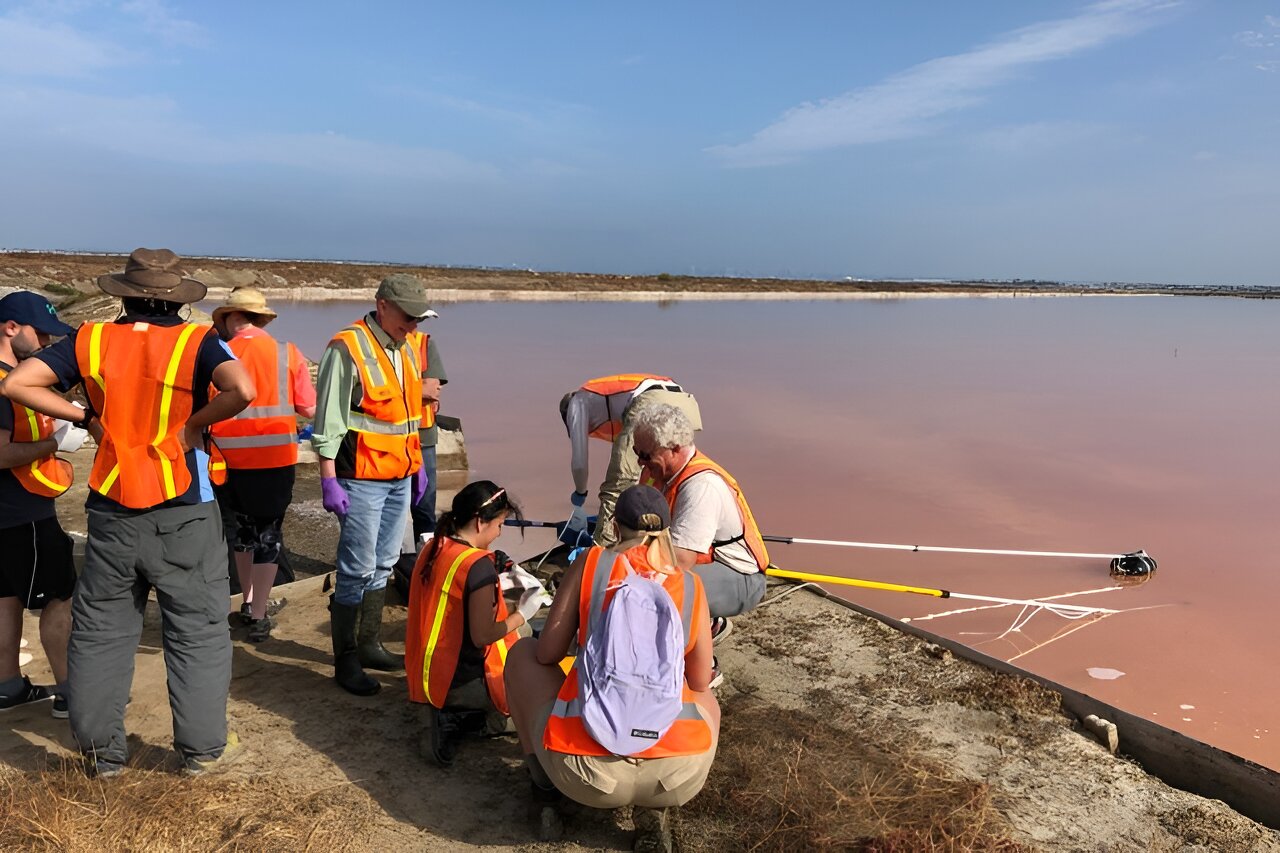On Earth, it seems to be true that life will find a way; in the deepest ocean, the saltiest ocean or the highest mountain, live seems to find a way to get a foothold. One of the key ingredients for life seems to be the necessity for water. Until now, it was thought that there was a limit to the level of salinity within which life could thrive. A team of biologists have found bacterial life thrives in salty ponds where the water evaporates leaving high levels of salt. This only serves to expand the likely envrionments across the Universe that life could evolve.
The search for life away from planet Earth has long fascinated humanity. Studies have often focussed on salt water environments since the salt lowers the waters freezing point allowing it to remain liquid over a wider range of temperatures. There are the added benefits with salt that is a fabulous preservative for any life that may have evolved and left signs of its existence.
The research is part of a larger program of work called Oceans Across Space and Time which is led by Cornell Iniversity and funded by NASAs Astrobiology program. It has the ambitious aim to understand how ocean worlds and life co-evolve to produce detectable signs of life, past or present! They hope to be able to help advance our understanding of teh conditions that make ocean worlds habitable and develop new ways to detect it.
The team from Standord University paper was published their report showing the analysis of the metabolic activity in thousands of individual cells from brine ponds in California. In these ponds, the salt is harvested by allowing the water to evaporate. It is in these samples that that life has been found to survive.
Examples of just how life has evolved in such environments can be seen in the South Bay Salt Works which were part of this study. The ponds have an amazing array of colours thanks to microbes that glow green, red, pink and orange. These amazing microbes have adapted to survive the high levels of salinity that would ordinarily have been inhospitable to other forms of life.
The ultimate goal of the study was to find out at what point cell activity such as division, cease to exist. Pure water has an activity level of 1 while salt water level is around 0.98. Prior to this study, it was believed that most activity stoped below 0.9 where salt levels become too high although laboratory studies showed that cell division would cease around 0.63. Following the study, it seems life can be sustained at levels as low as 0.54.
The results have started to change our views of the environments within which life can evolve and even be sustained. Not only does this now increase the likelihood of finding life, it enables us to widen the search for life across high salinity bodies of water and it even helps us to refocus the techniques used to continue the search.
Source : New research on microbes expands the known limits for life on Earth and beyond

